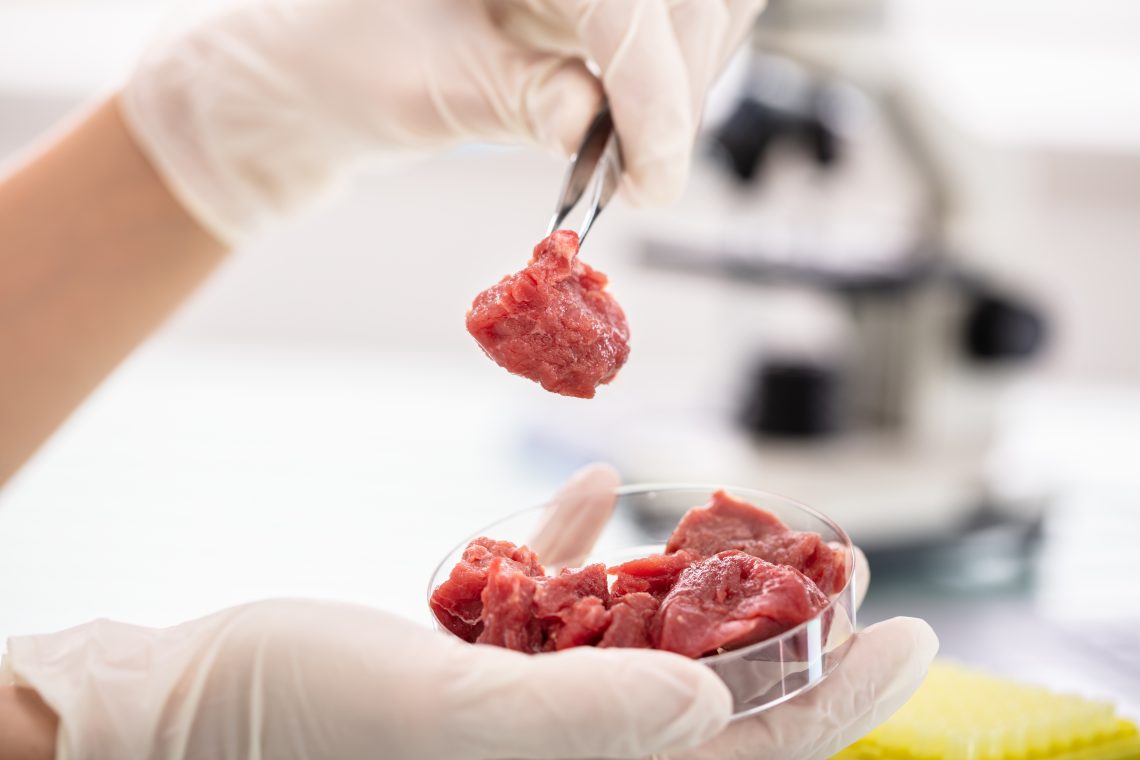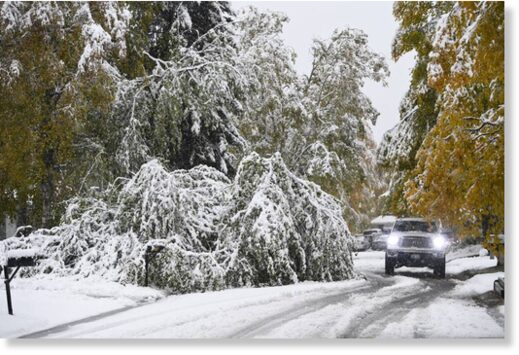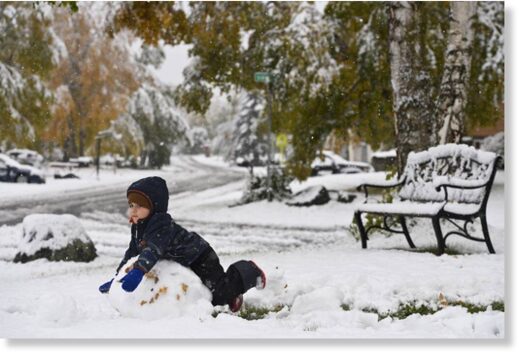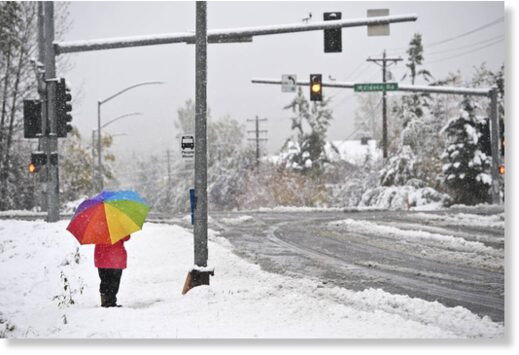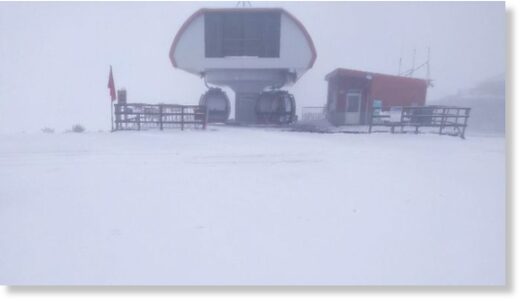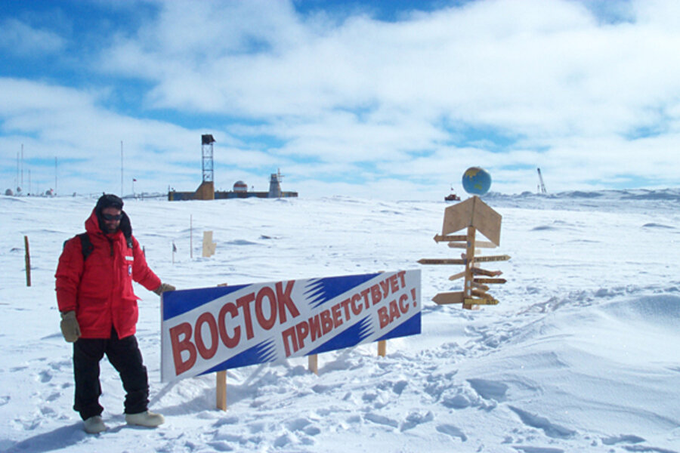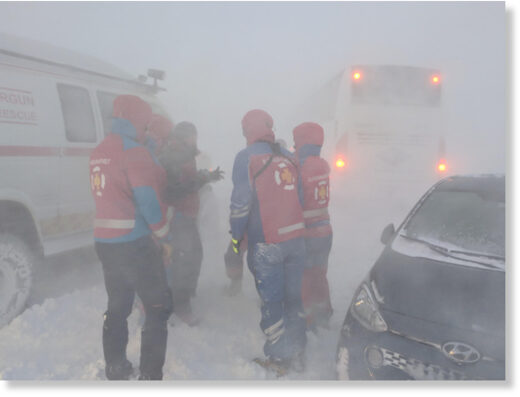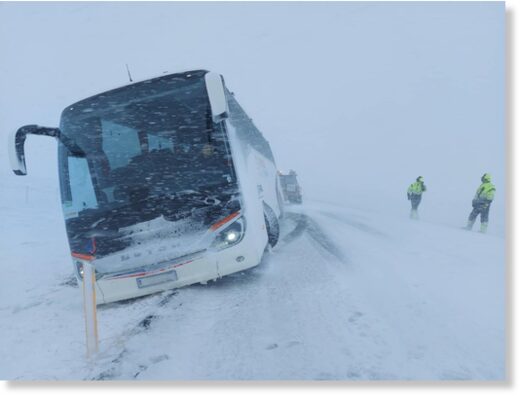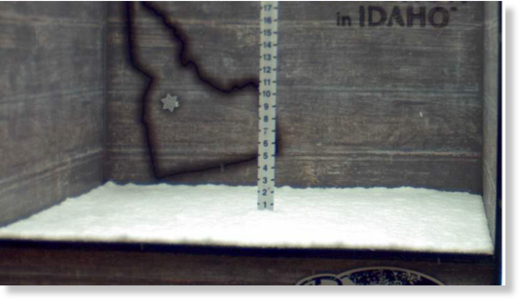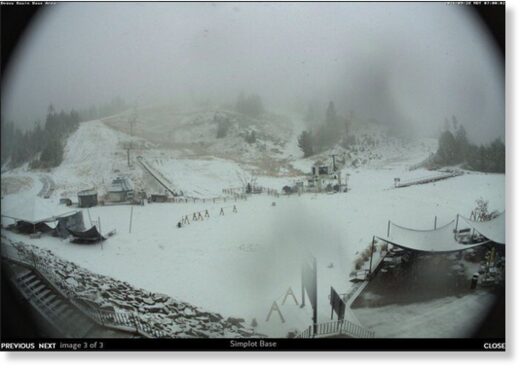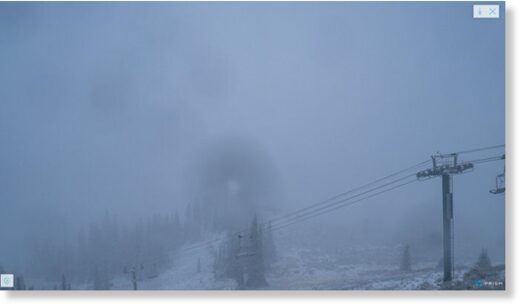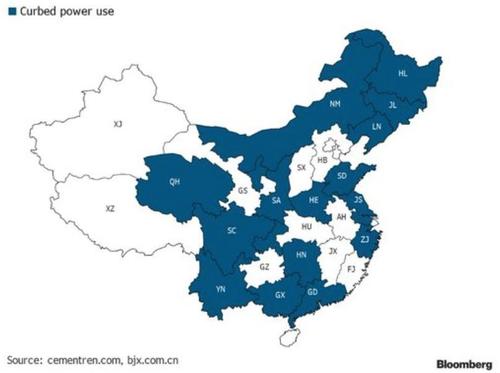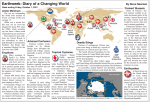We've had odd weather this year in Texas, below is an article showing how the various regions' crops have been affected:
High wheat prices could push Texas, U.S. acres upward (farmprogress.com)
High wheat prices could push Texas, U.S. acres upward
Shelley E. Hugule
Texas producers are expected to plant more wheat this season to capitalize on good market conditions.
Texas Crop and Weather Report – Sept. 21, 2021
Adam Russell | Sep 22, 2021
Wheat acres are expected to increase in Texas, but dry, warm conditions are delaying many plantings for now, according to a
Texas A&M AgriLife Extension Service expert.
Texas producers are expected to follow national projections and plant more wheat this season, said Fernando Guillen, Ph.D., AgriLife Extension statewide wheat specialist, Bryan-College Station. The latest
U.S. Department of Agriculture national estimate forecasts wheat acres rising more than 5% to 35.5 million acres, compared to 33.7 million acres last year.
Decent prices for wheat are driving the expectation of more planted acres, he said. Guillen reported prices reached $6.76 per bushel in mid-September.
Planning for success with wheat
Due to higher input costs this season, Guillen said producers should make strategic decisions that help maximize production and minimize expenses.
Soil analyses are recommended for fields with suspect nutrient availability, especially nitrogen and phosphorous. Phosphorous can be especially important for producers hoping to get quick plant establishment and maximum output for fall grazing, Guillen said.
“Prices bring an incentive to expand wheat acreage, but there are a number of considerations that will be critical to producers’ success this season,” he said. “We want producers to maximize their profit potential and reduce risks, and there are several ways they can be planning now that could pay dividends later.”
Guillen said choosing the correct wheat variety for localized conditions and producer goals is the most important first step for maximizing production potential. There is no single recommendation that fits every farm, but AgriLife Extension and
Texas A&M AgriLife Research experts across the state provide the
wheat “Picks” list each year to steer producers toward the most appropriate varieties for specific wheat-growing regions.
A wheat variety’s water requirements, grain yield potential, disease and pest resistance, milling and baking attributes are all notable qualities to look at when choosing a variety, Guillen said. He added that another important criteria to be considered is how consistent a wheat variety’s performance is over multiple years.
Guillen said AgriLife Research and AgriLife Extension uniform variety trials in various regions of the state provide a wealth of multiple-season data that helps guide the agency’s recommendations for each region.
“Growing conditions in Texas are highly variable with climactic fluctuations that make predicting production conditions and outcomes difficult,” he said. “So placing an emphasis on plant performance over years can give you a better idea how they might perform this season.”
Weather and wheat plantings
Drier, hotter weather has been the norm in many wheat-producing parts of the state after good spring and early summer rains, so Guillen said there has been very little wheat planting activity so far, at least in dryland fields.
And these conditions could continue because there is a high likelihood Texas will experience an El Niño weather pattern, Guillen said. El Niño systems historically deliver warmer, drier conditions through the winter for most of the state.
See, Rain delays early wheat seeding in Oklahoma
These weather expectations could discourage or delay wheat plantings. Some producers may plant wheat in dry soil if forecasts call for decent chances of rainfall, while others may wait for rainfall to plant.
“It’s hard to predict how farmers will react to conditions,” he said. “So, we are trying to inform farmers on how to make wise and timely decisions for their operations. The price is attractive, but farmers need to plan according to their situation and location.”
Grazing, grain and/or dual-purpose wheat
How the producer plans to utilize wheat will play into what variety they choose and when they plant, Guillen said. A number of management practices differ if farmers plant for grain production compared to planting dual-purpose crops for grazing and grain or grazing alone.
Producers looking for grazing going into winter typically begin planting as early as possible. But the lack of rainfall could delay those plans, he said.
Planting early comes with tradeoffs, especially in years when soils are warmer and drier, Guillen said. Early planting provides more time for diseases and pests to impact wheat stands.
It can allow insect pests like Hessian fly in volunteer wheat and diseases like wheat streak mosaic virus in newly planted fields, he said. For that reason, Farmers should rid fields of volunteer wheat and any green plant material that could be housing flies and wheat curl mites, the host insect of wheat streak mosaic virus.
Guillen said producers hoping for grazing should look for varieties with increased early vigor and tillering ability so that good stands are established. They should also look to get the most out of their fertilizer regimen. Overall soil condition, base fertilizer applications and factors like soil moisture and rainfall should loom large for each producer’s decision.
Some recommendations call to apply 100% top dressing twice – about one-third of the nitrogen before or at planting followed by two-thirds of the application of nitrogen around the joint stage for the wheat field.
“There are several considerations when it comes to how much and when to apply nitrogen, but being more efficient with our fertilizers can translate into improved yields and lower input costs,” he said. “The wheat market is difficult to predict because global factors can come into play. Careful planning is important to give producers the best chance to take advantage of opportune conditions and prices.”
AgriLife Extension district reporters compiled the following summaries:
The 12 Texas A&M AgriLife Extension Districts
CENTRAL
Dry conditions continued, and another week of warm, dry weather was in the forecast. Cotton harvest continued, and growers were pleased with yields and quality thus far. Plantings of fall forages were limited so far due to dry, warm soils. Winter wheat was expected to be planted following cotton harvest, which should be at months end. Almost all corn and sorghum stubbles were worked under. Pasture conditions for hay and grazing were on the decline due to limited rainfall. Livestock remained in good body condition.
ROLLING PLAINS
Hot, dry and windy weather has left soil conditions very dry. Farmers were preparing fields for wheat, but very little planting activity was reported as most farmers waited on a rain to proceed. Some early wheat was planted in dry soil. More producers were expected to dust in wheat if rains do not materialize soon. Wheat planting was completed in some areas. Late-planted Sudan was baled up with good yields reported. Cotton continued to mature in abnormally hot and dry fall weather. Irrigated cotton looked good, but dryland cotton conditions were poor in some areas. Rangeland grasses were browning and going dormant due to lack of moisture. Grasshoppers and armyworms continued to be a problem. Producers were gearing up to harvest peanuts. Cattle were still grazing on available forage. Cows looked good, but milk production was decreasing as nutritional value in the grasses declined. Calves looked decent, but gains have slowed down. Farmers were in the fields, some plowing getting ready to plant wheat and others planting a few fields.
COASTAL BEND
Scattered showers occurred in parts of the district, but overall conditions remained dry. Some areas in the northern part of the district were affected by Hurricane Nicholas with winds claiming 10% of the cotton still on the stalk, while other areas were unaffected and cotton harvest continued. Main crop rice harvest finished up, and ratoon crop rice was irrigated with some fields headed out. Soybean harvest was nearing an end with average to above-average yields. Hay production slowed down, and some areas reported a decline in rangeland and pasture conditions due to dry weather. Additional rain was needed as producers prepared pastures for winter. Livestock remained in good condition with high prices at market. One pecan producer estimated a third of their crop was lost due to wind damage.
EAST
Subsoil and topsoil conditions were adequate, but most of the district needed rainfall. A few counties reported scattered showers that improved growing conditions. Fall vegetable planting was underway. Producers were gearing up to plant winter pastures. Hay production was winding down. Pasture and rangeland conditions were fair to good. Cattle market prices were lower. Livestock remained in fair to good condition. Anderson County reported yellow and black aphids showing up in pecan orchards. Wild pigs remained a problem in pastures and hay meadows. Timber prices were up slightly.
SOUTH PLAINS
Dry conditions continued across the district. Many producers irrigated crops up to last week. Corn and sorghum harvests started. Peanuts were very close to harvest, and some producers were preparing to dig. Silage harvest continued. Cotton bolls were opening early due to dry conditions, especially dryland fields, and producers were worried about an early freeze. Rains were needed for wheat planting. Cattle were in good condition, and grazing and hay availability were good going into the fall.
PANHANDLE
Northern and southern areas reported short soil moisture, while central areas reported short to adequate soil moisture levels. Pasture and rangeland conditions were poor to fair. Corn was dented and maturing, and sorghum was coloring and maturing. Some early planted sorghum should be harvested soon. Cotton conditions were fair to good, and bolls were opening. Soybeans were in fair to good condition and should be harvested soon. Peanuts were in good condition. Wheat plantings were off to a slow start due to dry, warm conditions.
NORTH
Soil moisture was short to adequate for most counties and continued to decline with no reports of rainfall. Rain was desperately needed across the district to replenish ponds and to get crops through the remainder of the summer growing season. Some moisture could help producers make another cutting of hay. Sorghum harvest was mostly complete, and soybean harvest was underway. Livestock were in good condition.
FAR WEST
Temperature highs were in the upper 90s with lows in the low- to mid-60s. Conditions were starting to dry up in some areas after more than two weeks without rain. Thunderstorms produced lightning and rainfall, and precipitation reported ranged from trace amounts to 2 inches. Cotton looked good, but there were some whitefly infestations in certain areas. Pecan orchards looked healthy, and rains helped with aphid control. Clearing of weeds and grass on orchard floors was behind schedule. Some orchards reported above-average pecan potential while others were reporting an average to below-average year. Alfalfa fields were weedy and grassy due to above-average moisture. Lower quality hay was abundant. Rangelands looked very good, even in desert areas. Livestock were being supplementally fed.
WEST CENTRAL
Conditions dried out significantly over the past few weeks. Row crops, rangelands and pastures showed signs of moisture and heat stress. Cotton fields progressed, and some bolls opened. There was some field preparation for small grain planting, but most wheat producers were waiting for rainfall. Some producers began planting oats, but most were holding off for a chance of rain in the forecast. Some hay was baled and cut. Insect pests continued to cause problems with forages, trees and shrubs. Fall armyworms were reported in harvested corn fields. Producers were disappointed in fed cattle cash prices, and slaughter numbers impacted stocker and feeder prices as higher volumes of cattle were marketed.
SOUTHEAST
Soil moisture levels were short to surplus. Many counties received heavy rains from Hurricane Nicholas. Chambers County reported 5-8 inches of rain while Jefferson County reported up to 12 inches of rainfall, but Walker County reported only trace amounts up to 1.25 inches of rain. Drier weather was in the forecast. Some rice was lost due to high winds and rain. Producers reported hay stores this year were well below average to average this season. Pastures were dry and trees appeared very stressed in Grimes County. San Jacinto County reported armyworm infestations. Rangeland and pasture conditions ranged from very poor to excellent.
SOUTHWEST
Pasture and range conditions declined, and wildfire conditions increased due to lack of moisture and warmer temperatures. Hay harvesting continued. Cotton harvest was going well. Corn harvest continued, and small grain fields were being prepared for planting wheat and oats. Livestock were in fair condition. Caldwell County reported livestock markets were good, with high prices on calves, sheep and goats. Producers were providing supplemental feed to livestock and wildlife. Wildlife remained in good condition. Fall gardeners were planting and preparing fall gardens.
SOUTH
Soil moisture levels continued to decline under hot and dry conditions. Hurricane Nicholas delivered some rain in areas. A few counties reported 1-3 inches of rainfall. A cool front was in the forecast. Fieldwork, including tilling and stalk destruction, was active. A few acres of corn and sorghum remained unharvested. Cotton harvest was complete in some areas and getting underway in others. Cotton bales were being shipped to gins in many areas. Some late-planted cotton fields were being defoliated. Peanuts were being irrigated in some areas, and digging was starting in some fields. Sesame fields looked good. Strawberry fields were being prepared. Fall vegetables were being planted. Beans were being irrigated and managed for pests. Pecan orchards were not looking good. Cantaloupes and watermelons continued to produce. Bermuda grass hay fields were being cut and baled. Pasture and rangeland conditions were declining, but some areas reported conditions were holding well. Forage producers were cutting and baling hay, and producers in Willacy County reported excellent hay producing conditions. Supplemental feeding of livestock was increasing. Cattle producers were weaning calves and culling herds, and cattle prices were good at sale barns. Sugarcane fields and citrus orchards were being irrigated. Citrus producers continued to rehabilitate trees damaged by the winter storm in February, while others were uprooting entire orchards.
Source: is AgriLife TODAY, which is solely responsible for the information provided and is wholly owned by the source. Informa Business Media and all its subsidiaries are not responsible for any of the content contained in this information asset.





